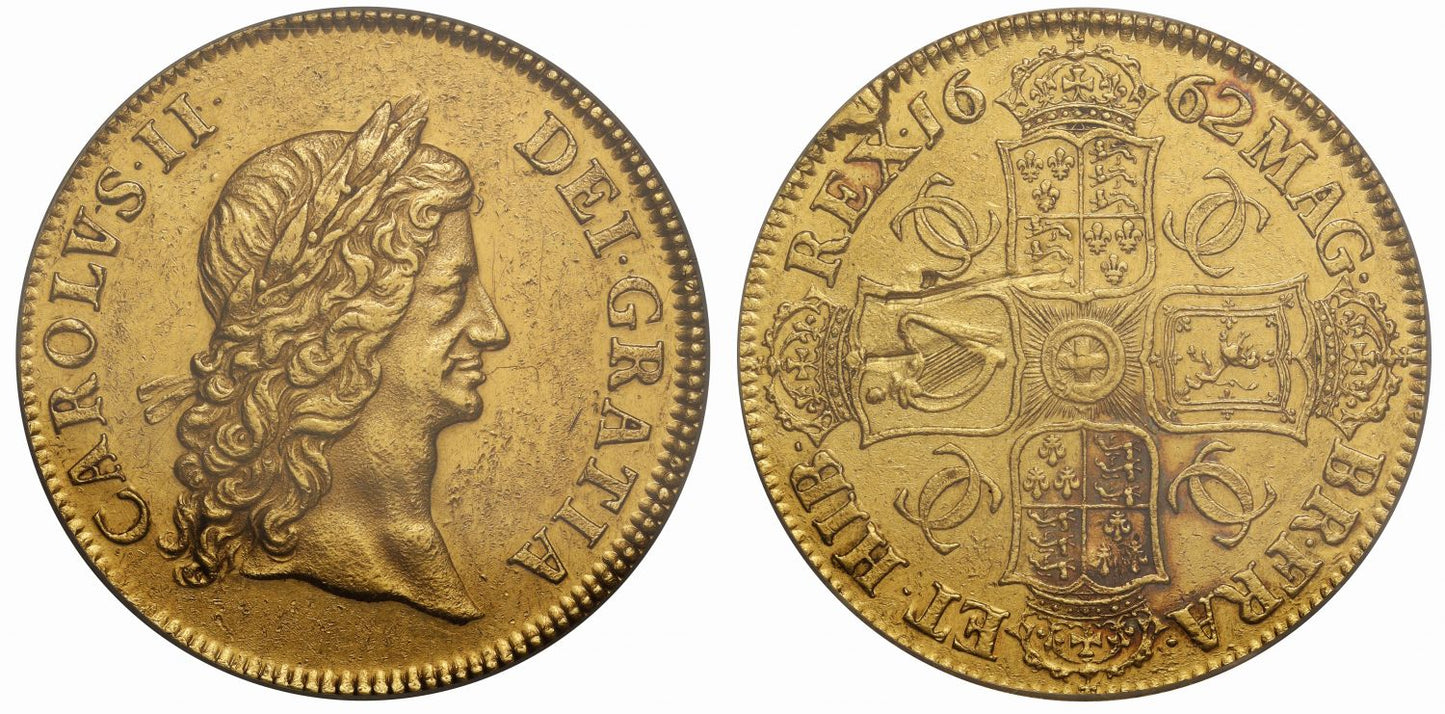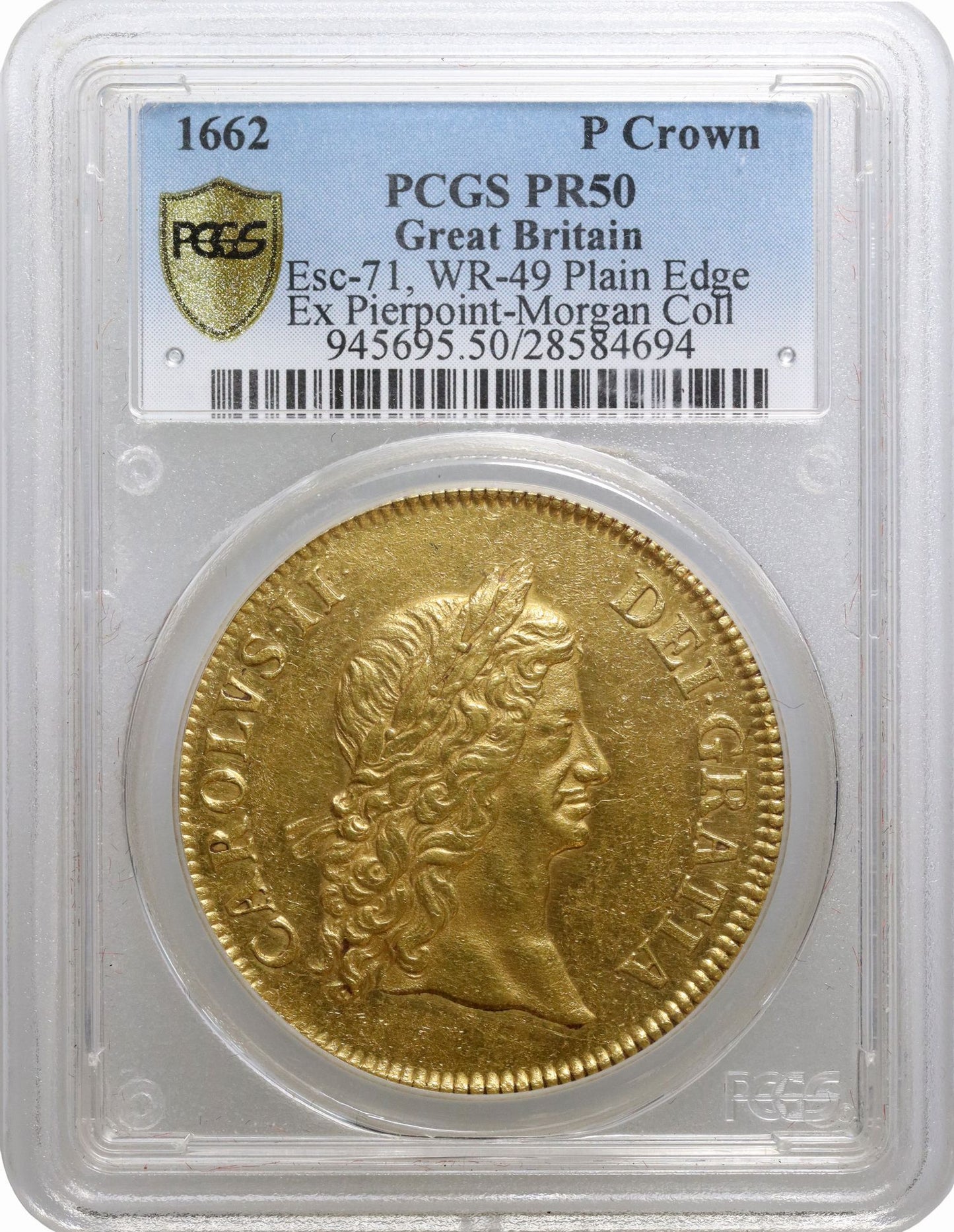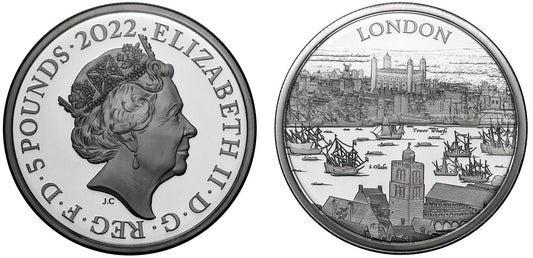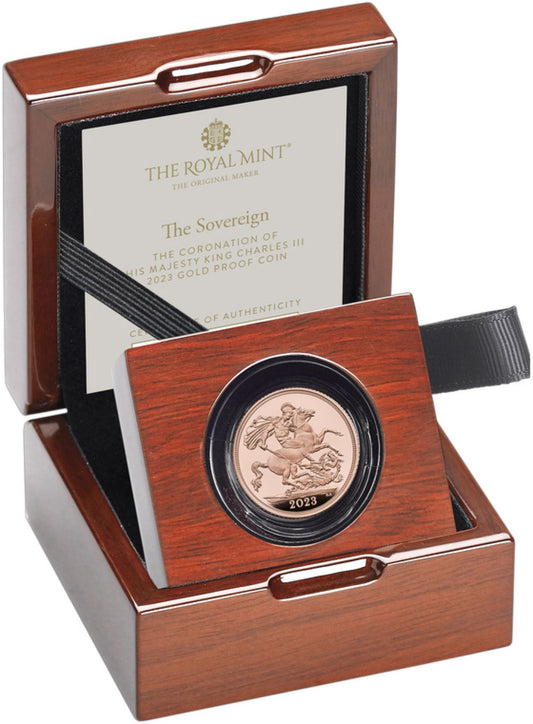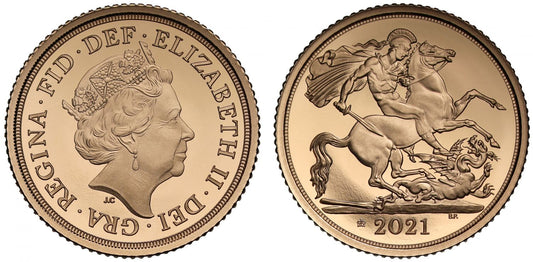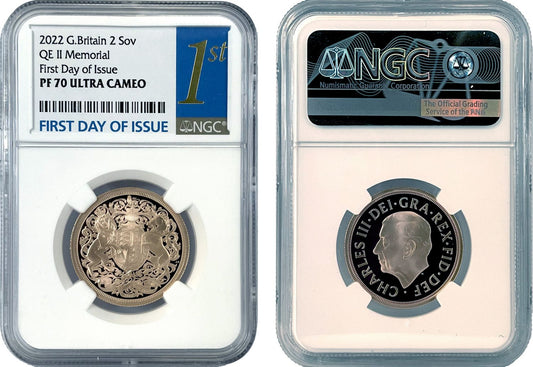FAQs
What makes a coin valuable?
I have coins to sell, what’s the next step?
How will my purchases be shipped?
What happens if I’m not entirely happy with my purchase?
Charles II 1662 gold pattern Crown, plain edge by Roettier, 4 known, PR50
Charles II (1660-85), Pattern Proof Crown, 1662, struck in gold, engraved by Joseph Roettier, laureate head truncated at neck facing right with frosted skin, laurel wreath of ten leaves and three berries, frosted lettering in legend with toothed border surrounding, CAROLVS.II. DEI.GRATIA, rev. inverted die axis, crowned cruciform shields, garter star at centre, pairs of interlinked C's in angles, Arms of England quartered with France top and bottom, Scottish Arms to right, Irish Arms to left with nine strings to harp, date either side of top crown, abbreviated Latin legend MAG. BR.FRA. ET.HIB. REX., distinctive V shape die flaw on rim above X of REX curious to this issue, edge plain, weight 58.09g (Linecar and Stone 1; Murdoch 617; RR GA2; Bull 427 R5; ESC 71 R6; WR 49 R5; ). Lightly toned, of mottled appearance from a peppering of tiny nicks, digs and surface marks, black patch of tone on reverse, scratch along the side of Irish shield, some wear to high points of design and lettering, has been graded and slabbed by PCGS as PR50.
PCGS certification 945695.50/28584694 pedigreed on label as "Ex Pierpont-Morgan Coll"
The Latin in the legends translates as on the obverse "Charles the Second, by the grace of God" and continuing on the reverse as "King of Great Britain, France and Ireland."
Provenance:
Ex Duchess of Beaufort, Christies, 1st May 1890, lot 122.
Ex J. Pierpont-Morgan (1837-1913), Collection on display post-mortem at the J.P. Morgan Library, New York 1913-17.
Loaned for display at the American Numismatic Society 1917-49 when coins deaccessioned from the J.P. Morgan Library and sold in 1949 to dealer Wayte Raymond.
Ex Herbert M. Lingford Collection, part 1, Glendining, 24th October 1950, lot 265, plate I sold for £360.
Ex MDC Monaco, auction 15, 23rd October 2024, lot 1752.
There are only four known examples of the plain edge gold pattern of 1662 in existence today and interestingly a matching number of the gold lettered edge version as well, which may well be the sum total of what was struck of each in 1662. The dies used to strike the plain edge pattern, as we have demonstrated here, all have the reverse die showing the triangular shaped die cud flaw on the rim above X of REX, whereas the lettered edge gold patterns utilise a different reverse die without it. 1662 was a key year in the final transition from hammered to milled coinage and ructions within the staffing of the Mint. Thomas Simon who had worked skilfully as principal engraver under the Puritan regime of Oliver Cromwell continued in employ for the initials hand made hammered coinages of Charles II. The King had desired his coinage to be made by Pierre Blondeau's machinery like the Cromwell portrait pieces of 1656-58, however the negotiations and logistics of moving the machinery from Drury Lane where it was based to the Mint in the Tower of London took many months as it required the personal direction of Blondeau who Thomas Simon convinced to return from France and was not ready until early 1662. As of January 1662 Simon returned to the Mint from France and was ordered to bring in all his tools and puncheons and coin related paraphernalia so that all coin work could only be conducted within the confines of the Tower of London. It was intended for Simon to work alongside the newly appointed Roettier brothers introduced from the Low Countries. John and Joseph Roettier were ordered on 24th January 1662 (1661 old style) to prepare counters, puncheons and matrices for coinage by machinery. Thomas Simon received a warrant a week later on 31st January 1662 to prepare similarly with the intention of King Charles II that they all work together on engraving dies. Time was also of the essence as the King desired all the old Commonwealth coinage be withdrawn and replaced and the thought was that Simon would need help with the coinage as much of his time was also taken up with working on seals and medals and the order of the 31st instant was repeated to Simon again on the 3rd February 1662. However, all was not plain sailing as friction quickly generated between Simon and the Roettiers culminating in an order of 7th February 1662 for both the Roettiers and Simon to engrave trial pieces in silver for judgement by the King. The Roettiers stepped up to the mark and produced their best pattern piece(s) in a timely manner for the competition, but it appears Simon missed the deadline leading to his petition to the King by way of his best effort Crown piece dated 1663 with his petition emblazoned up the edge and which has become the most valuable silver coin in the entire British series of which some 18 examples exist today, as well as the companion "Reddite" edge crown. The animosity between Simon and Roettiers is evident in a Mint report by Freeman and Slingsby on coinage machinery costs, prices and fees as well as Blondeau's edge marking, which ends in the sentence highlighting "By reason of a contest of the art betwixt them, wee doe at present find it a very difficult thing to bring them into any agreement."
The Roettiers pattern design being the only entry won the competition by default and on the 19th May 1662 John Roettier was asked to prepare all the dies for the new milled coinage and granted office of one of the Chief Engravers with a salary of £50 a year. Pierre Blondeau arriving in January of 1662 was allocated £1,400 to equip and construct the modernised Mint in the Tower with all the necessary machinery to strike a coinage and he was officially appointed Engineer of the Mint on 17th May 1662 on a salary of £100 a year with living accommodation included. He also received a licence lasting for 21 years with provision to keep his edge marking invention secret.
The Roettier patterns are therefore a product of this newly set up minting technology and they based their numismatic imagery of the King on a newly made drawing by the miniaturist and limner Samuel Cooper. This drawing was produced on 10th January 1662 as reported by the diarist John Evelyn who "had the honour to hold the candle whilst it was doing; choosing to do this at night & by candle light, for the better finding of the shadows." (Evelyn edited by Beer, 1955, volume III, p309-311). The Roettier pattern Crown received Royal approval some time before the order of the 19th May 1662 to prepare for coinage, whether that coin was the pattern with an undraped obverse like the gold piece offered here or the draped bust version issued for currency of the same date is not crystal clear, but there is also a gold proof with a draped bust as per currency dated 1663. Such gold pieces would only have been produced for the highest echelons of society and the Royal Family and would have been perhaps produced in gold once the successful outcome of the competition would have been known. There are no gold struck versions of the 1662 draped bust obverse crown known and only the proof in silver which happens to carry the same reverse die as this piece with the triangular die cud (L&S 3; Bull 421 R6; ESC 21 R6; RR SB2). There does not seem to be a surviving record of the timeline of what occurred exactly in relation to these exclusive pieces, but perhaps the undraped bust pattern was produced by Roettier first in silver for the competition. Perhaps this pattern subsequently wins the competition with at least four examples then being struck in gold as Royal pieces of pleasure as the winning design. Then it was perhaps suggested to add a drapery for what would become a silver coinage from 1662, the crown being the first new milled silver coin being issued, with halfcrowns and shillings to follow in 1663, or maybe the draped and undraped patterns were all available together, we will perhaps never know for sure.
The undraped bust type was reserved for a gold coinage which then commences from the date 1663 with the Guinea which was a twenty shilling face value at the time. A Double Guinea is introduced subsequently dated 1664 and the Five Guinea from the date 1668 and Half-Guinea dated 1669. The Pattern Crown in gold dated 1662 was certainly not intended as a trial piece for a large gold denomination at this time as it weighs so much heavier. A 1668 Five Guinea weighs in at around 42g, whereas this 1662 dated pattern in gold herewith and presumably the other three all weigh over 58g. Even if the draped bust version came first dated 1662 as suggested in "Thomas Simon his life and work 1618-1665" by Nathanson, the gold and silver undraped patterns are certainly concurrent with them. This author suggests that had Simon not taken so long over his coin work on the last hammered issues of 1660-61 then the Roettiers may not have been invited to England in the first place to assist at the Mint and was further frustrated at not being recognised for his engraving effort at time of the Restoration. A further blow to Simon came on 8th April 1662 when his first milled gold issue of Twenty Shilling pieces with a draped bust of the King was terminated after some 3,400 pieces were struck mainly in March because the dies had too higher failure rate. Charles II had to continue to recognise his Father's appointment of Thomas Rawlins as Chief Engraver from the prior Royalist regime and though Rawlins was infirm he lived longer than Simon who died in 1665, and Rawlins did not pass away till 1670 whereupon the Roettiers became joint Chief Engravers and continue beyond the reign of Charles II.
The enigma of these spectacular gold strikings, the first gold patterns to be produced by the new machinery remain highly coveted examples of the intricacy of the art of engraving. The emotion of wondering who has held and seen such a coin is most endearing to literally touch history.
The other three examples of this plain edge gold pattern dated 1662 that we can trace are:
Example 1, weight 58.57g previously in the C. Dabney Thompson collection sold to Spink 1965.
Ex G. Le Mare Collection sold to Spink 1971.
Ex Glendinning, 13th April 1972 Sale, lot 372.
Ex John G. Brooker, milled gold collection sold to Spink circa 1973.
Ex Ethan Stroud, Collection sold to Spink circa 1983.
Ex Danny Arnold Collection anonymously in Spink Coin Auction 97, 13th May 1993, lot 36.
Ex UBS, Switzerland, auction 50, 30th January 2001 lot 20.
Ex Hess Divo, auction 297, 22nd October 2003, lot 77.
Ex Dix, Noonan, Webb, 28th September 2006 Sale, lot 636, front cover coin.
Ex Kroisis Collection, Stacks, 14th January 2008, lot 2861.
Ex A. H. Baldwin Fixed Price List, Winter 2009 item BM057.
Ex MDC 10, 13th October 2022, lot 1022, sold as MS61 for 340,000 euro hammer.
Example 2,
Ex J. E. Moon, Sotheby, 7th May 1901, lot 317, plate IV, sold for £61.
Ex John G. Murdoch, Sotheby, 8-13th June 1903, lot 617, plate XIII, sold for £80
Ex G. Hamilton-Smith, Glendining, 23rd May 1927, lot 63, plate IV sold for £162.
Ex C. Dabney Thompson collection sold to Spink 1965.
Ex Glendining 13th April 1972, lot 372,
Ex Bloomhold Foundation, Sotheby, 16th December 1996, lot 9,
Ex Spink Auction 129, 17th November 1998, lot 261.
Ex Roderick Richardson, Spring 2002, item 15, RRGA2.
Example 3,
Given as Hunterian Museum, Glasgow.
FAQs
What makes a coin valuable?
I have coins to sell, what’s the next step?
How will my purchases be shipped?
What happens if I’m not entirely happy with my purchase?
